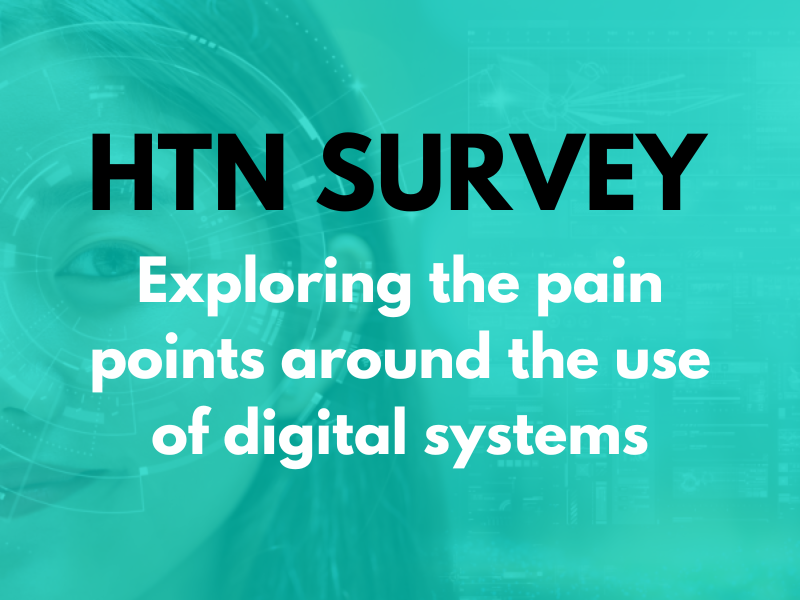South West London ICS (SWL) has published its latest digital strategy covering 2025-2028, centred around five digital priorities: digital infrastructure, integrating systems, data strategy, empowering citizens, and innovation.
Noting the organic growth of SWL’s current digital infrastructure, the plan cites the need to create a “robust and secure digital platform across SWL, ensuring comprehensive cyber security, system and data availability, data quality and appropriate governance”. Moving forward, the ICS commits to establishing expert digital teams and developing digital competence, implementing and consolidating systems, improve capacity management, ensuring digital procurements are interoperable and represent value for money, and levelling-up provider digital maturity. A piece of work is also underway, according to the strategy, to map all SWL organisations against the SWL Infrastructure Blueprint, with the aim of informing what target architecture will look like and creating “roadmaps” at an organisational level to achieve it.
The strategy also shares the SWL Enterprise Architecture Blueprint and the ICS’s approach, underpinned by “core themes” including governance, assurance, co-design, interoperability, embracing AI, automation, secure by design, and cloud first. Here, the ICS commits to ensuring systems and applications are supported by open APIs, integrating AI and machine learning “thoughtfully”, ensuring tech initiatives adopt a digital-first approach fostering a culture of self-service, and encouraging the use of secure cloud services “that offer scalability, flexibility, and enhanced security”.
SWL also introduces key themes informing the ICS’s cyber resilience, including cyber strategy and governance, with clear roles and responsibilities outlined; risk management with the adoption of “an approach that identifies, assesses and mitigates cyber risks across all parts of the system”; and education, training, culture, and resourcing, building a culture that “encourages a security conscious environment”. The ICS also commits to implementing “robust” monitoring systems to detect and respond to cyber threats in real time, to “leveraging threat intelligence to identify and address vulnerabilities proactively”, and to developing “rigorous vetting and monitoring processes” for suppliers to secure the supply chain.
Integrating systems
SWL’s strategy shares that the levelling-up of information systems across the region will play a part in helping to integrate systems, in turn improving information flow and continuity of care. This levelling-up agenda will also include EPR, where the ICS will support the St George’s and Epsom and St Helier EPR joint domain implementation and develop a “strategic approach” to future EPR provision including considerations for an ICS-wide Longitudinal Health and Care Record. “Enhancing the functionality of the London Care Record” will also remain a “key priority”, according to the publication.
The strategy goes on to outline four programmes of work designed to tackle challenges around interoperability and information sharing: preparing a strategic outline case and approach to the development of a Longitudinal Health and Care Record, supporting the deployment of Cerner to Epsom and St Helier University Hospitals and the strategic outline case for Kingston and Croydon, enhancing the usage and deployment of the SWL Health Information Exchange and London Shared Care Record, and reducing the number of EPR support solutions.
Data and innovation
Using connected data in “new ways” to identify areas for improvement and to target resources more effectively, working with clinical leadership to determine “the best way to provide digital solutions with agreed minimum requirements” to improve access to care, and encouraging innovative digital solutions to “resolve known problems and leverage opportunities to improve how our services are delivered”, are further key components to the SWL digital strategy for the next three years.
Improving the use of data will help manage waiting lists and reduce unwarranted variation, the strategy notes, whilst providing citizens with tools to undertake their own monitoring will support with the management of long-term conditions. Improved use of data will also help support Primary Care Networks and Integrated Network Teams to collaborate in a “more efficient way”, the SWL strategy says. It adds that: “We will provide our PCNs/ITNs with access to timely population health insights and analytical support in line with our improved data capabilities, which will allow primary care and community services to understand their capacity bottle necks and where to target service redesign.”
Over the next year, the ICS aims to optimise its analytics and business intelligence team, as well as to build “a community of data specialists” and to change the culture of “how we use data in SWL”. Other aims include ensuring data across SWL is “good quality”, having a “robust governance framework” in place for data, and delivering data environments. The ambition to enable AI to be used in a “safe, ethical manner” has also led the ICS to devise and adopt an AI Adoption Framework and Data Quality Framework “to ensure that there is joint ownership and effective governance in place in order to facilitate benefit realisation while providing sustainability”.
For innovation, the strategy sets out a design thinking approach with the aim of developing an Innovation Adoption Framework comprised of components such as need identification and prioritisation, small-scale proof of concepts to “gather real data and refine the innovation”, pre-implementation planning covering resource requirements and timescales, outcomes framework/evaluation to “monitor progress of outcome through data”, and quality improvement cycles to embed the ability to learn from experience and share knowledge. The ICS also shares its ambition to “horizon scan supplier and product landscape”, including by creating an online portal for citizens and staff to share new ideas, and by scanning and assessing the supplier landscape “to understand the transformational benefits available from the market”.
Integrated systems and developments in data will also reportedly allow for the ICS to maximise the potential of technologies such as Ambient AI, with the strategy highlighting the uses of this technology in “allowing healthcare professionals to spend more time directly with patients”, ensuring “a more complete and richer medical record that is far more efficient to produce”, and assisting with medical coding.
Empowering patients
SWL’s strategy highlights patient portals and the NHS App in helping empower patients and support informed decision making, outlining work completed since its last strategy and current or continuing work across primary and secondary care. Work is currently underway, it states, to promote the use of the NHS app across primary care, with the help of four digital care coordinators who will be recruited and deployed to work in GP surgeries.
For secondary and tertiary services, work has been completed according to the strategy, on introducing the NHS App and local patient engagement portals to “three of our four acute hospitals” and the region’s cancer specialist hospital, with “over 400,000 acute hospital patients” having registered with PEPs to date. Acute PEPs are integrated into the NHS app, the strategy continues, offering services including appointment management, diagnostic test results, access to medical records, questionnaires and messaging, and wait list validation. PEP capabilities are being “actively developed” at SWL’s three Oracle/Cerner sites to enable the use of the NHS App across patient initiated follow up, to pilot the use of the app for preoperative questionnaires, and to develop the use of “Meet & Greet” processes such as welcome messages, service specific information, and support.
To read South West London’s digital strategy for 2025-2028 in full, please click here.
The latest on digital strategy and direction from across the NHS
We recently covered Bath and North East Somerset, Swindon and Wiltshire’s digital strategy to 2028, which set out a series of digital design principles to guide a system-wide approach, highlighting priorities including efficiencies of scale, information sharing, and simplification of the digital estate.
Updates from Somerset ICS and North West London ICS’s latest board papers shared an insight into current cyber security challenges and cyber security strategy, with Somerset setting out five objectives: developing and embedding a cyber aware culture; improving cyber risk visibility and management; building robust third-party assurance; prioritising collaboration; and ensuring ongoing resilience. North West London noted its application for £1.15 million in NHSE Cyber Risk Reduction funding not yet received, the ongoing development of NWL’s cyber strategy with a target completion date of the end of the financial year, continued progress around the London Shared Care Record and optimisation work around its acute provider EPR.
The Norfolk and Suffolk NHS Foundation Trust board meeting on 6 February highlighted plans around the procurement of an EPR to replace the trust’s current system, and ongoing work around data quality. For 2025/26, large scale change programmes are outlined including developing a health inequality strategy, responding to the CQC’s findings around improving quality, and continuing work to be “open and transparent partners”, strengthening partnership working at trust and locality level. For digital, the trust’s focus is on its digital transformation programme and the delivery of its digital strategy, with an EPR procurement, adoption of AI, and strengthened cyber security.





